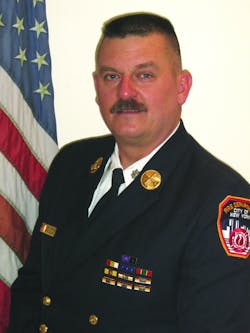The Fire Scene: Company Officer Skills: Setting the Tone for Your Crew
When we talk about “setting the tone,” we’re talking about how someone can create a mood or attitude among a group of people. Of course, the group of people I am talking about is firefighters and although just about anybody can set the tone, it is the company officer who should be most involved in this activity.
Those of you who are company officers probably think you already have too much on your plate, but you are mistaken. Yes, you and I and everybody else in the fire service are quite busy, but you don’t want to skip this important part of being a good boss. Let’s take a look at how “setting the tone” can have a great and positive effect on your crew, your company and your department.
I remember working as a young firefighter in FDNY Rescue 3, which responded to working fires, collapses and other emergencies in the Bronx and upper Manhattan. One of my favorite officers there was Pete Lund. Pete was a firefighter in Rescue 2 in Brooklyn and after being promoted to lieutenant he was assigned to Rescue 3. It didn’t take Pete very long to develop a group of firefighters who loved to work with him. I just had to arrive at the firehouse and see Pete’s car parked out front and my attitude, outlook and demeanor improved. And why was that? Why was it such a thrill to work a 24-hour shift with Lieutenant Pete Lund in Rescue 3? Because Pete had three abilities that made this possible: attitude, ability and outlook.
Pete had the best kind of attitude you can have, a positive attitude! Nothing, and I mean nothing, got him down. I remember working with him on many occasions when something would not go well. It might have been an encounter with the police Emergency Service Unit at an incident. It might have been a difference of opinion about how to handle a specific tactic at an operation or it might have been an uncomfortable personnel issue in the firehouse. Whatever happened and whoever it happened to, Pete would always have a positive side for the story. This positive attitude was also very contagious. You couldn’t be around Pete for very long without starting to feel, think and act just like Pete. That’s setting the tone.
Ability is the second ability that Pete had down cold. Pete was an experienced firefighter and officer and he had experience in engine and ladder skills in addition to rescue company skills. This level of training and experience resulted in Pete’s firefighters having a tremendous amount of respect and high expectations at every operation they responded to. This resulted in Pete’s firefighters having great faith in every order and direction Pete gave.
I remember responding to an all-hands working fire in Harlem during one night tour. When we arrived, there was some question as to the stability of the building. There were lots of firefighters, officers and chiefs there, but the question ended up being asked of Pete Lund. He gave then his answer and firefighting operations were resumed. The tremendous set of skills and abilities that Pete had made it easy to “follow him anywhere.” I know this is true because there were a few instances when I was at an operation with Pete and he would make a call that I did not personally agree with. And although I was in conflict, I readily and eagerly followed my officer into harm’s way because I knew that he knew what was best. That’s setting the tone.
Outlook is an ability that many people don’t have and never will have. Having outlook means to be able to mentally look down the road and make assumptions about what the situation may be and what may be necessary to do. Pete would always be looking ahead. Whether we were responding to a large fire or arriving at the scene of a collapsed building, Pete bound out of the rig with a plan. He rarely sat and contemplated issues or situations because, having outlook, he had thought about the situation before it developed into something that had to be “handled.” Outlook doesn’t only apply to fires and emergencies.
I remember another time when several members of the company were having difficulties with one another. Nothing major, but constant conflict. Before it ever reached the point of requiring an officer to intervene, Pete looked ahead and suggested to the captain that these two firefighters work on different shifts. No discipline, no trouble; just staying ahead of the game and paying attention. You can’t have outlook if you don’t pay attention.
Working in Rescue 3 was a thrill every tour that I was assigned there, but working in Rescue 3 with Lieutenant Pete Lund was an honor and a privilege. He was a great boss who had the ability to set the tone every tour he worked and in every room he entered. Next time you are sitting around the firehouse thinking about what you can do to make your company and your department better, think about Lieutenant Pete Lund and start setting the tone!
Pete Lund died in the line of duty on June 14, 2005, at the age of 54. He suffered a heart attack while responding as the officer on his volunteer fire department’s heavy rescue to a house fire. He had recently retired from the FDNY.
Chief Salka takes a candid look at news and events impacting the fire service in his blog “The Fire Scene” at http://www.firehouse.com/blogs/the-fire-scene
